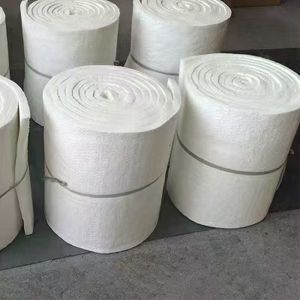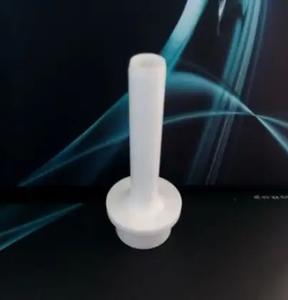Discover Premium Ceramic Products | Durability & Elegance United | Advanced Ceramics
1. Introduction
In the past 48 hours, industrial ceramics manufacturers have reported a surge in demand for high-performance refractory components, especially silicon carbide crucibles, driven by advancements in metal casting and lab-scale material synthesis. As industries seek more durable, thermally stable alternatives to traditional graphite or alumina crucibles, proper handling of silicon carbide crucibles has become critical to avoid premature failure.

Whether you’re melting non-ferrous metals, conducting high-temperature experiments, or working in a foundry, understanding how to correctly use and care for your silicon carbide crucible can save time, money, and materials. This guide provides clear, actionable steps to get the most out of your crucible while avoiding common pitfalls.
2. Understanding Your Silicon Carbide Crucible
Silicon carbide crucibles are prized for their exceptional thermal conductivity, resistance to thermal shock, and ability to withstand temperatures up to 1600°C (2912°F). Made from high-purity silicon carbide, these crucibles outperform many alternatives in both industrial and laboratory settings.
It’s important to distinguish silicon carbide from similar ceramics. For example, boron carbide vs silicon carbide: while both are ultra-hard, boron carbide is more brittle and less thermally conductive, making it less ideal for crucibles. Meanwhile, silicon nitride—used in products like silicon nitride crucible factory outputs, custom silicon nitride heat shields, or silicon nitride rings—offers excellent fracture toughness but lower thermal conductivity than silicon carbide.
3. Step-by-Step Guide to Using a Silicon Carbide Crucible
3.1. Pre-Use Inspection
Before first use, inspect your silicon carbide crucible for cracks, chips, or surface defects. Even minor damage can lead to catastrophic failure under heat stress. Also ensure it’s clean and free of dust or residues.
3.2. Proper Preheating

Never place a cold silicon carbide crucible directly into a hot furnace. Thermal shock is the leading cause of crucible failure. Instead:
- Place the empty crucible in a cold furnace.
- Gradually ramp the temperature: 150°C per hour up to 600°C, hold for 30 minutes, then increase to operating temperature.
- This slow preheating drives off moisture and relieves internal stresses.
3.3. Loading and Melting
When adding materials, avoid dropping heavy charges into the crucible. Use tongs or scoops to gently place metals or powders. Overfilling can cause spills and uneven heating. Fill only to 70–80% capacity.
For reactive melts (e.g., aluminum or zinc), consider using a protective flux to minimize chemical attack on the crucible wall.
3.4. Cooling and Removal
After use, allow the crucible to cool slowly inside the furnace if possible. Rapid cooling—like placing it on a cold metal surface—can cause cracking. Once below 200°C, it’s safe to handle with proper gloves.

4. Common Problems and Solutions
4.1. Cracking or Spalling
Cause: Thermal shock or mechanical impact. Solution: Always preheat gradually and avoid physical knocks.
4.2. Glazing or Surface Buildup
Cause: Repeated exposure to molten salts or oxides. Solution: Clean with a soft brush after cooling; avoid abrasive tools that scratch the surface.
4.3. Reduced Lifespan
Cause: Using the crucible beyond its temperature rating or with incompatible materials (e.g., strong alkalis). Solution: Verify chemical compatibility and never exceed 1600°C.
5. Maintenance and Storage Tips
Store your silicon carbide crucible in a dry, dust-free environment. Moisture absorption can weaken the structure over time. If storing long-term, wrap it in clean paper and place it upright to prevent stress on the base.
Avoid stacking crucibles unless designed for it—this can cause microfractures. Also, never use water to cool a hot crucible.
6. Beyond Crucibles: Other Silicon Carbide Ceramic Products
While this guide focuses on crucibles, silicon carbide is used in many high-performance ceramics. Examples include silicon carbide ceramic tiles for kiln linings, rbsic silicon carbide tile blocks for wear resistance, silicon carbide ceramic columns for structural support, and silicon carbide burner nozzles for efficient combustion.
You’ll also find silicon carbide in everyday items like silicon carbide ceramic baking dishes, silicon carbide ceramic dinner plates, and even silicon carbide ceramic butter dishes—though these are typically lower-purity variants designed for thermal retention, not extreme heat.
Industrial applications extend to silicon carbide tubes (including silicon carbide thermocouple protection tubes and silicon carbide ceramic tubes for high-temperature furnaces), silicon carbide discs for grinding, and silicon carbide ceramic piping for corrosive fluid handling.
7. Conclusion
A silicon carbide crucible is a powerful tool—but only if used correctly. By following proper preheating protocols, avoiding thermal shock, and storing it properly, you can significantly extend its service life. Remember: silicon carbide isn’t just for crucibles; its versatility spans from dinnerware to furnace components, but each application demands respect for its material limits. Treat it well, and it will deliver exceptional performance for hundreds of cycles.
Our Website founded on October 17, 2012, is a high-tech enterprise committed to the research and development, production, processing, sales and technical services of ceramic relative materials such as How. Our products includes but not limited to Boron Carbide Ceramic Products, Boron Nitride Ceramic Products, Silicon Carbide Ceramic Products, Silicon Nitride Ceramic Products, Zirconium Dioxide Ceramic Products, etc. If you are interested, please feel free to contact us.

